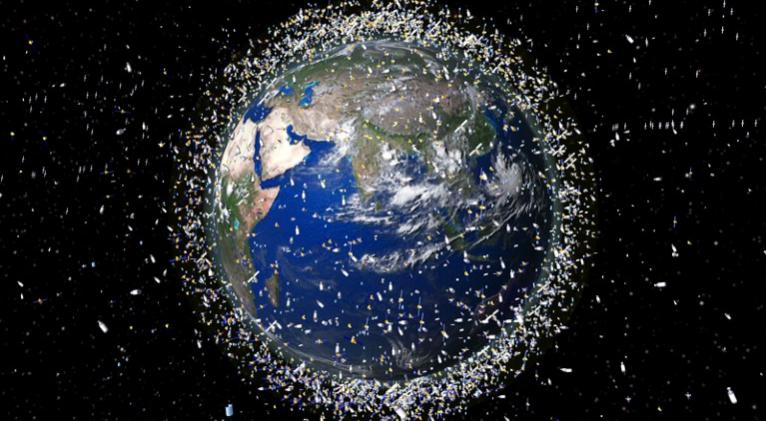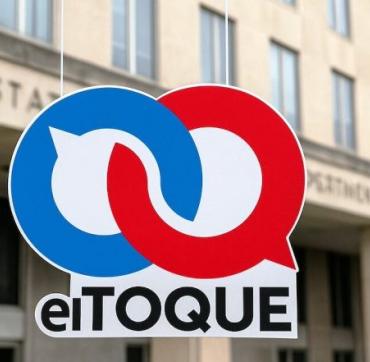Rubiera: Space debris could leave us locked on this planet
especiales

We, humans, have contaminated the oceans, the earth’s surface, even the air we breathe…and our waste is now littering the outer space.
Surveys carried out last year showed that over 100 billion pieces of space junk, debris from past operations, orbit the planet, most with less than one centimeter wide.
And if the issue is of larger “sizes,” it should be noted that about 30 thousand objects larger than a baseball remain orbiting around this planet Earth, increasingly becoming less and less blue.
Some of these objects travel at very high speeds and there is a possibility that they end up impacting this planet, without ignoring the risk for space missions and the International Space Station.
And this panorama becomes even worse after the space race added commercial purposes to its tasks.
This was confirmed by the US National Oceanic and Atmospheric Administration (NOAA), by using high-flying aircraft that, for the first time, took samples of the stratosphere, whose study allowed scientists to corroborate how the sky behave, changing for the worse.
According to that study, 10% of particles in the upper atmosphere now contain metal fragments from rockets or satellites that fall out of orbit and burn up. They predict that human-made debris will make up half of stratospheric aerosols in the coming decades.
In search of more details and, above all, solutions, last February the aerospace company Rocket Lab launched the "On Closer Inspection" mission that investigates dangerous orbital debris. They put into orbit a Japanese inspection satellite that, after evaluation, will make it possible in the future to deorbit such objects, thus supporting the sustainability of future space operations, which are now threatened by this floating junk.
Also consistent with those concerns, a year ago an international group of space technology professionals and pollution experts called for a legally binding treaty to protect Earth from such space debris.
Rubiera gives his opinion
The threat posed by space debris is so important that Dr. José Rubiera, known to all Cubans, has spoken out on the matter.
It was at the beginning of this March when the renowned meteorologist wrote about the topic, its origins and gloomy prospects for excelenciascuba.com.
He recalled that the origins of this space debris can be traced back to that glove that, in June 1965, escaped through the open hatch of the ship through which the American astronaut Edward White had left, to star in one of the first space walks.
It was just a glove, an apparently harmless glove, but, by gaining a speed of 28 thousand kilometers per second orbiting the Earth, it had become "a powerful projectile," as the expert described it, while also pointing this event out among the first space debris generated by humans.
The doctor cites the European Space Agency (ESA) to remember that in 2022 the amount of material orbiting this planet will exceed 10,000 metric tons. And although there is now awareness of the problem it causes and efforts are being made to avoid it, he says, the number seems to continue to grow in the coming years, unless better control measures can be implemented.
Possible control measures could perhaps include, in addition to those mentioned above, also a very unique wooden satellite, designed by scientists from the Japanese Space Agency (JAXA) in collaboration with colleagues from the North American Space Agency (NASA).
It happens, as reported by Smithsonian Magazine, that the wood seems to withstand the characteristics of space well, without any damage, after tests carried out with varieties of birch, Japanese cherry and magnolia, which remained on the International Space Station for 290 days without showing variations.
The other strength of this project is that upon re-entering the Earth's atmosphere, said satellite burns, disintegrating completely.
In this way, the risk of space contamination or possible impacts is eliminated, in contrast to the current satellites which, if they become debris, pose significant threats.
LignoStella Space Wood is the name of this original wooden satellite project, which is expected to have its first launch this summer.
This could mark a turning point in terms of space debris about which the Cuban scientist José Rubiera, after elaborating on the great risk of a collision with some of these particles in space, warns:
“The greatest danger, looking to the future, is that space debris will continue to grow and reach high altitude areas where there is now a lower concentration of it. In that case, we could stay locked on our planet, unable to leave home, unable to launch any satellite or spacecraft. So, if a viable procedure cannot be implemented to remove all the satellites and space devices that are inactive, that moment, unfortunately, could come.”
Translated by Sergio A. Paneque Díaz / CubaSí Translation Staff














Add new comment